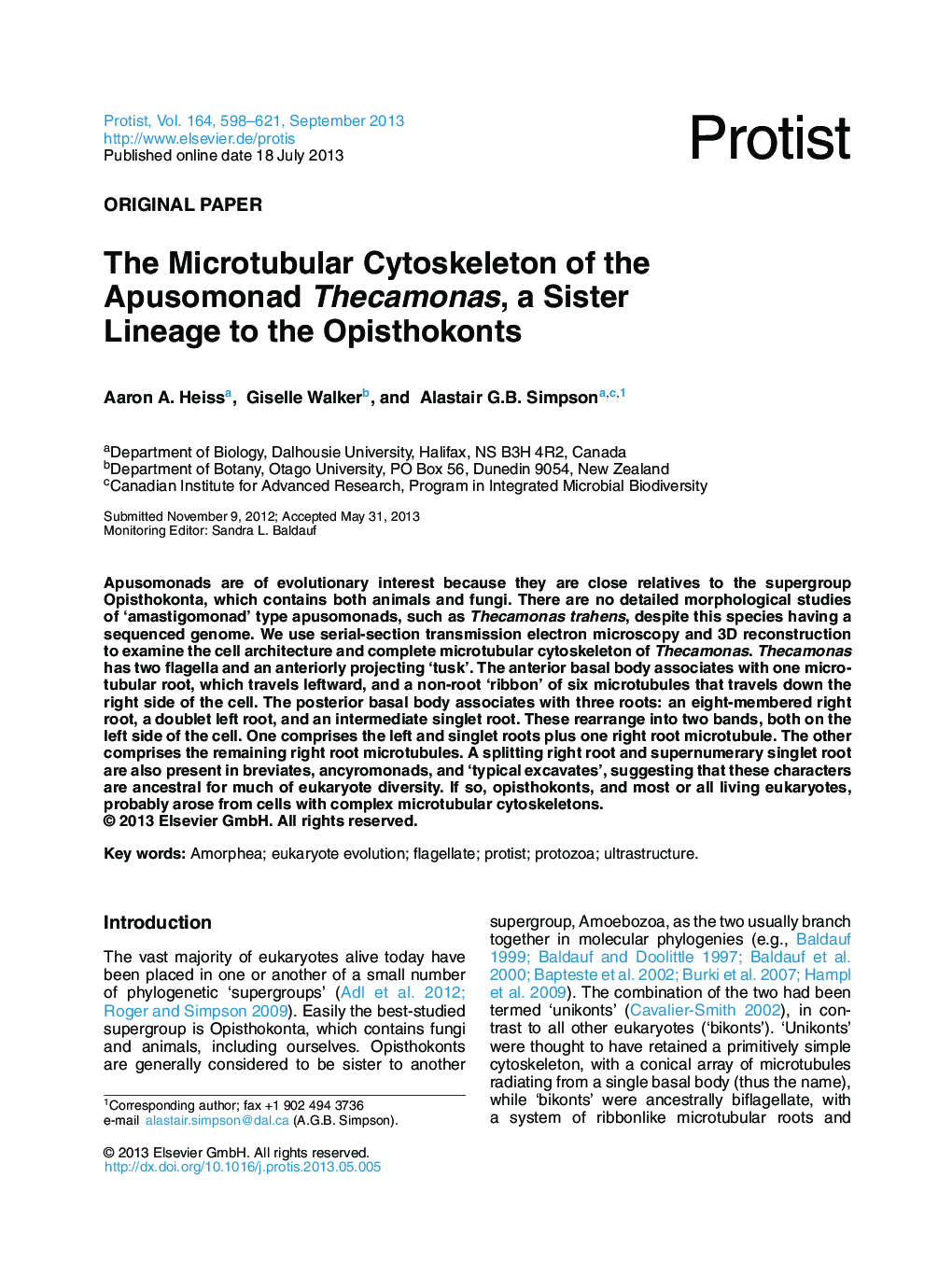| Article ID | Journal | Published Year | Pages | File Type |
|---|---|---|---|---|
| 2062095 | Protist | 2013 | 24 Pages |
Apusomonads are of evolutionary interest because they are close relatives to the supergroup Opisthokonta, which contains both animals and fungi. There are no detailed morphological studies of ‘amastigomonad’ type apusomonads, such as Thecamonas trahens, despite this species having a sequenced genome. We use serial-section transmission electron microscopy and 3D reconstruction to examine the cell architecture and complete microtubular cytoskeleton of Thecamonas. Thecamonas has two flagella and an anteriorly projecting ‘tusk’. The anterior basal body associates with one microtubular root, which travels leftward, and a non-root ‘ribbon’ of six microtubules that travels down the right side of the cell. The posterior basal body associates with three roots: an eight-membered right root, a doublet left root, and an intermediate singlet root. These rearrange into two bands, both on the left side of the cell. One comprises the left and singlet roots plus one right root microtubule. The other comprises the remaining right root microtubules. A splitting right root and supernumerary singlet root are also present in breviates, ancyromonads, and ‘typical excavates’, suggesting that these characters are ancestral for much of eukaryote diversity. If so, opisthokonts, and most or all living eukaryotes, probably arose from cells with complex microtubular cytoskeletons.
